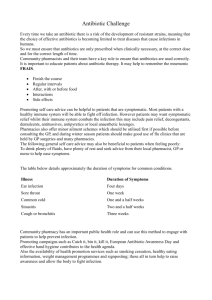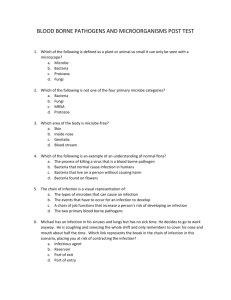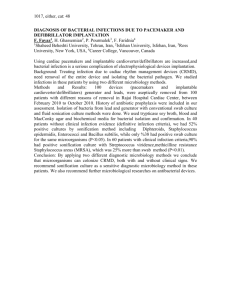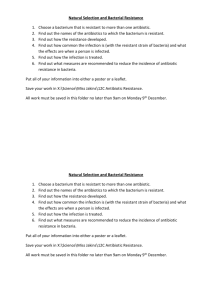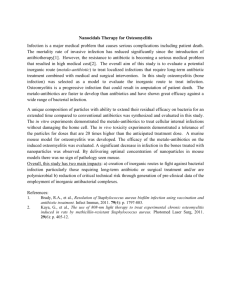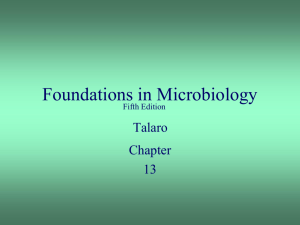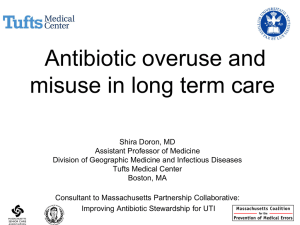Introduction to Antimicrobials
advertisement
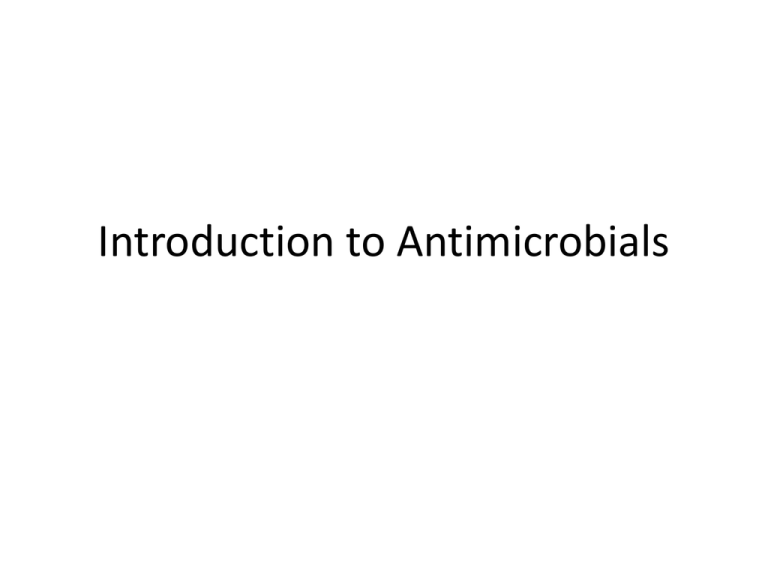
Introduction to Antimicrobials General Terms • Chemotherapy • Antibiotic – substance produced by a microbe that may harm another microbes • Antimicrobial – any agent that harms a Microbe • Anti-infective – any agent that reduces or eliminates infection Selective Toxicity • Ability of an antibiotic to destroy target cells without damaging host cells • Differences between microbes and host – Prokaryotic vs Eukaryotic – Cell wall – Inhibition of microbial enzymes – Disruption of bacterial protein synthesis Antibiotic classifications • Narrow vs. Broad Spectrum • Susceptible organisms – Antibacterials – Antifungal – Antiviral • Classification by mechanism • Distinction: Bacteriocidal vs. Bacteriostatic Resistance • Relative resistance vs. True Resistance – MIC: Minimum inhibitory concentration • Mechanisms – – – – Drug enzymes Cease uptake of drug Change in bacterial receptors Synthesize drug antagonists • Acquisition – Spontaneuos mutation – single resistance – Conjugation –multiple drug resistance Factors that Influence Resistance • Use of broad vs. narrow spectrum • Suprainfection • CDC Twelve step program highlights – – – – – – – – – Immunize IV’s out ID consult Contamination vs. infection Colonization vs infection Say no to vanco Stop when infection is gone Isolate the pathogen Break the chain – wash your freaking hands Selection of Antibiotics • Considerations – Identification of microbe – Drug sensitivity of microbe – Host factors • Site of infection • Immune status • Empiric therapy Host Factors • Host defense (immune system, skin) • Site of infection – BBB, vascularity, heart valves, abcess • • • • Age Pregnancy & Lactation Previous Allergic Reaction Genetic Therapy • Dosage 4-8 x higher than MIC • Duration of therapy – relapse & resistance • Combinations – Additive – Potentiative (synergistic) – Antagonistic: bateriocidal + bacteriostatic Prophylaxis • • • • Surgery Bacterial endocarditis Neutropenia Other • Attempted Tx of untreatable infection – “Concerned mother syndrome” – “Physician wants to appear to be doing something syndrome” • Tx of fever of unknown origin • Dosage too low • Tx in absence of adequate bacteriologic information • Omission of surgical drainage Monitoring Antibiotic Therapy • • • • Fever Resolution of S/S Serum drug levels Cultures
